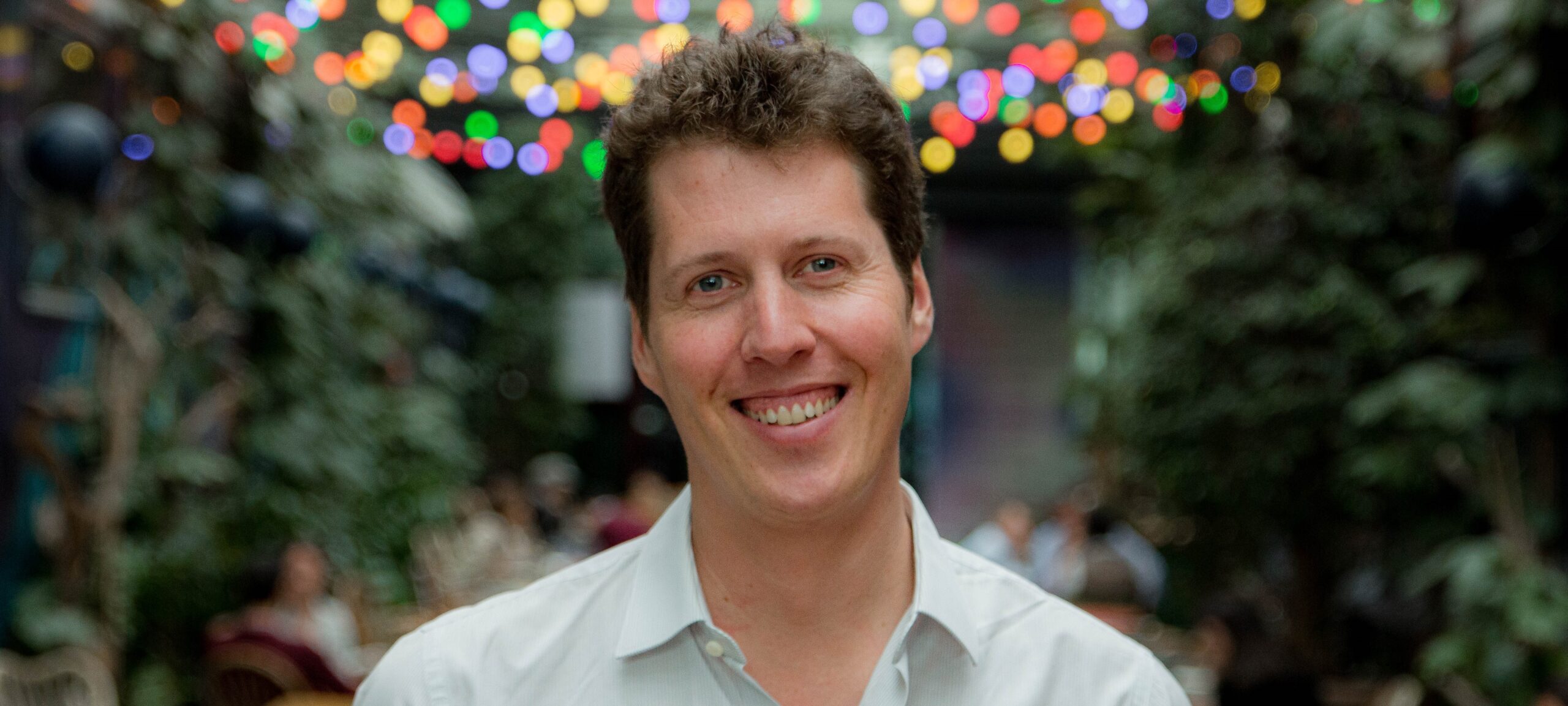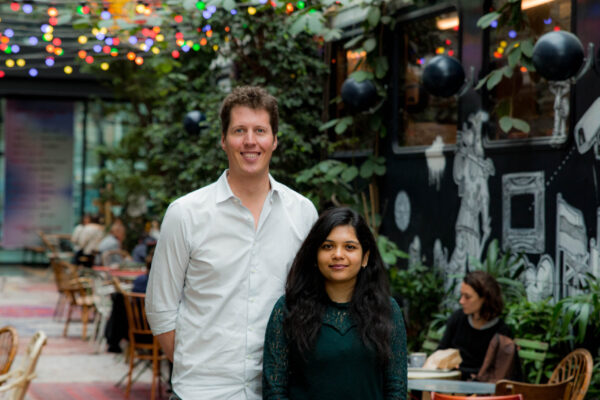How Samp Transforms Industrial Facilities
Q: Can you share a little background about your company?
A: Our company is using AI to speed up the transition of industrial facilities into a more sustainable future. We do that by helping these sites get a shared and reliable understanding of their assets so they can upgrade or transform them much faster. We typically make modernization projects an order of magnitude quicker.
Q: Did you have an idea before you joined the program?
A: Yeah, I had a pretty good idea of what issue I wanted to dig into—the sustainability of aging industrial facilities. I’ve been around the block in this industry, so I know the challenges they’re up against as I personally suffered from this technical debt for many years in these organizations. But how to solve it? That part was still fuzzy. All I knew was that I had a burning issue I wanted to tackle, and that was clear as day to me.
Decision to Join Entrepreneurs First
Q: Why did you decide to apply to Entrepreneurs First?
A: I spent two decades working for big corporate players in the industry. I started seeing that the changes we need—both in mindset and technology—weren’t going to come from the usual big players in software or industry. It needed to come from smaller, nimbler teams.
That’s why I decided to go solo and kickstart my own venture. I had a clear picture of the problem that needed fixing, but I was missing a key element—a tech-savvy co-founder. That’s the missing puzzle piece I found at Entrepreneurs First. I met Shivani there, who’s our CTO and co-founder. And together, we’re on this super exciting journey with Samp, shaking things up in the industry.
Entrepreneurs First’s Application Process
Q: Can you describe the application process?
A: Funny story, they reached out to me first. And I’ve gotta be honest, at first, I thought it was spam. I mean, getting paid to start your own company? Sounded too sweet to be true. But after a couple more emails, I did some digging and found out it’s legit—a really good program, actually.
So, I jumped in. The first step was filling out a form that dives into your background, what motivates you, and how you see the world differently. After that, I had a chat with one of the EF team members to go more in-depth about my background and motivations and see how I’d vibe with the rest of the future cohort. It was a pretty straightforward but enlightening process.
Q: Do you have any tips to share for the application process?
A: There’s this one question they ask that’s both challenging and super interesting: “What’s a strong belief you hold that few people agree with?” This question is gold if you’re looking to start a company. Don’t just go with the flow and say something everyone else might say. Dig deep. Find that one unique, even kinda out-there belief that sets you apart. Spend some quality time pondering this before you dive into the application. Trust me, it can make a world of difference.
Inside Entrepreneurs First Program
Q: What happens after you get accepted?
A: The roller coaster started. First, I had to say goodbye to my previous gig. Took some time off with the family to get my head straight—I’ve got a wife and three kids, so balance is key, you know?
Before the program even kicked off, we got a sneak peek at the profiles of our future cohort mates. I shortlisted about four or five folks I thought I could work with. Started the coffee chats and then I met Shivani. It was like, you’ve got the tech, I know the problem—let’s do this thing.
And this program doesn’t waste time. It’s all about failing extra fast. The moment you’ve got a kernel of an idea, you get out there. Start talking to people who might be interested. You get a read on the market pretty quickly. Shivani and I hashed out the details, made some calls, and it became clear how we wanted to approach things. With my 20 years in the industry, I had a solid network to run ideas by. We zeroed in on our vision in like 10 days. A month and a half in, we already had two letters of intent from customers. We knew we hit something big.
Q: Did you have access to mentors and experts?
A: Inside EF, you get hooked up with local mentors—in my case, the ones in Paris. But it doesn’t stop there; you also get access to the international community and even the alumni. And these people know their stuff. Maybe not so much on the industrial side—that’s where my own network came in—but when it comes to the nitty-gritty of launching a startup, like business models, finance, and product-market fit, they’re rockstars.
Q: Did you get any funding from the program?
A: So here’s how it goes down: After three months in the program, you face the “Investment Committee.” If you make the cut—and we were the top pick among 30 potential companies—EF hooks you up with some starter funds. We were one of only three teams to get through, so we’re pretty stoked about that. This cash helps you move into the second phase of the program, which is all about turning your idea into a real-deal company. So now you’re talking incorporation, landing that first customer, and sealing the first deals. The second part also runs for three months, the same as the first. As for how much cash we’re talking about, I can’t get into specifics.
Best Benefits of the Program
Q: What were the biggest benefits you got from the program besides the funding?
A: It’s not just about the cash. For a first-time founder like me—albeit with tons of industry experience—the guidance on business and product-market fit was gold. But if you ask me, the real game-changer was the nudge EF gave me to actually take the leap and start my own company. Sure, I’d been mulling it over for years, but with three kids and all, taking the plunge isn’t a walk in the park. EF was like this safety net that whispered, “Hey, you’ve got this. Go for it.” They gave me the confidence and the framework to say, “Okay, let’s do this thing.” It’s a wild ride, and you need all the support you can get. That’s where EF stepped up big time.
Q: Did you experience any aha moments during the program?
A: The first one was like straight out of a movie—meeting my co-founder, Shivani, over coffee at Station F. She starts talking about this tech she’s been working on, and I’m like, “This is it. She’s the missing piece to solve the problem we’re targeting.” It was a no-brainer.
The second one was when we were pitching to a major international energy company and all we had was this single slide outlining a vision for something we might build. And they’re all, “Yeah, build that, and we’ll buy it.” Mind blown, right? Here we are, just this small startup, getting a thumbs-up from top management at a huge corporation. It’s like, wow, this startup life is something else!
The Current Status of Samp
Q: What’s the current status of Samp today?
A: We’re a team of 22 trailblazers, knee-deep in three years of R&D. Our product is out there making waves at dozens of sites across Europe, primarily in the water and energy sectors.
But this is just the beginning. We’re in full-throttle mode, scaling our solution across a multitude of industrial sites. Think of it as a sustainability domino effect—one site at a time, and the pieces are falling into place.
Also, we nailed our seed stage last year. Now, we’re considering the idea of a Series A next year. That’s the word on the street, and the momentum is real.
Q: What growth channels have you explored so far?
A: The age-old quest for the perfect go-to-market strategy. We knew our product was golden. We had those LOIs signed, sealed, and delivered faster than you can say “product-market fit.” But navigating the labyrinth of sales and marketing channels for large B2Few deals? That was our Herculean task.
We’re not your run-of-the-mill SaaS company. We spent months experimenting, tossing out hypotheses, and testing them in the real world. We iterated several times to finally find what was THE right approach for us.
We struck gold. We’ve dialed in on that go-to-market fit that’s custom-tailored to Samp. Trust me, there was a before and an after. As soon as we identified the right GTM for us, tailored it, and started to systematically implement it, it changed everything.
Q: What challenges did you face in reaching potential customers?
A: Navigating the complexities of customer acquisition was akin to mapping out unknown territory. We used a multifaceted approach that included LinkedIn campaigns, participation in events, cold emailing, and exploring partnerships for indirect sales. Our industry provided unequivocal feedback; some methods were clearly effective while others were not.
After thorough A/B testing and refining our messaging, it became evident which strategies were fruitful for us. With this clarity, we’re now focusing on leveraging what works to elevate our business further.
Final Thoughts
Q: Do you have any final tips for founders thinking of applying to Entrepreneurs First?
A: The eternal game of waiting for “the right moment”—don’t buy into it. You know how people say, “I’ll have kids when I’m ready,” or “I’ll make the leap when things line up”? That’s a pitfall. You might as well be waiting for a bus that’s never gonna come.
If you’re contemplating a major move, whether it’s clicking the ‘Apply Now’ button for an opportunity or embarking on a new venture, don’t wait. Act now and replace your “what-ifs” and “could-haves” with “I did.” Go ahead, seize the moment without hesitation.


